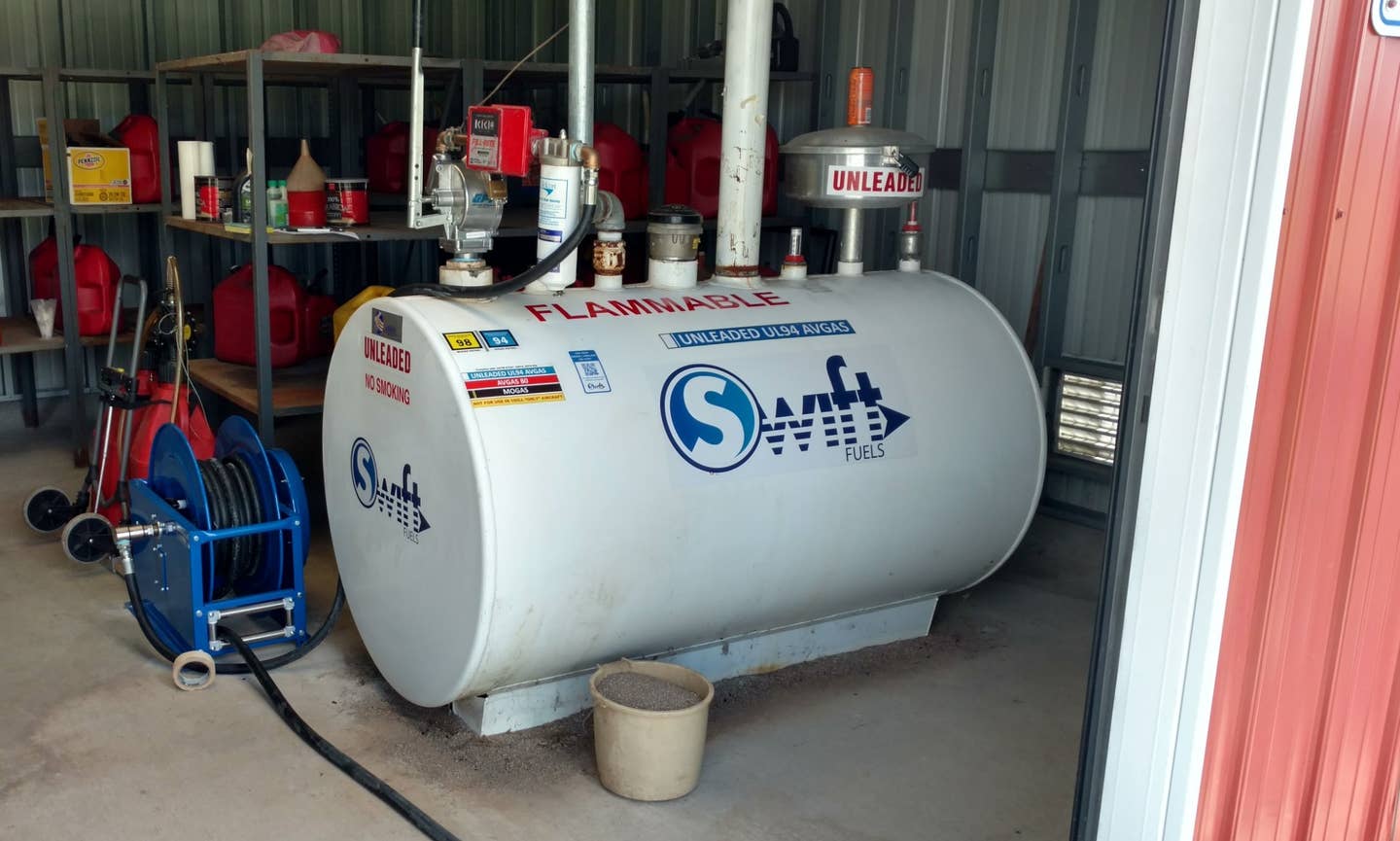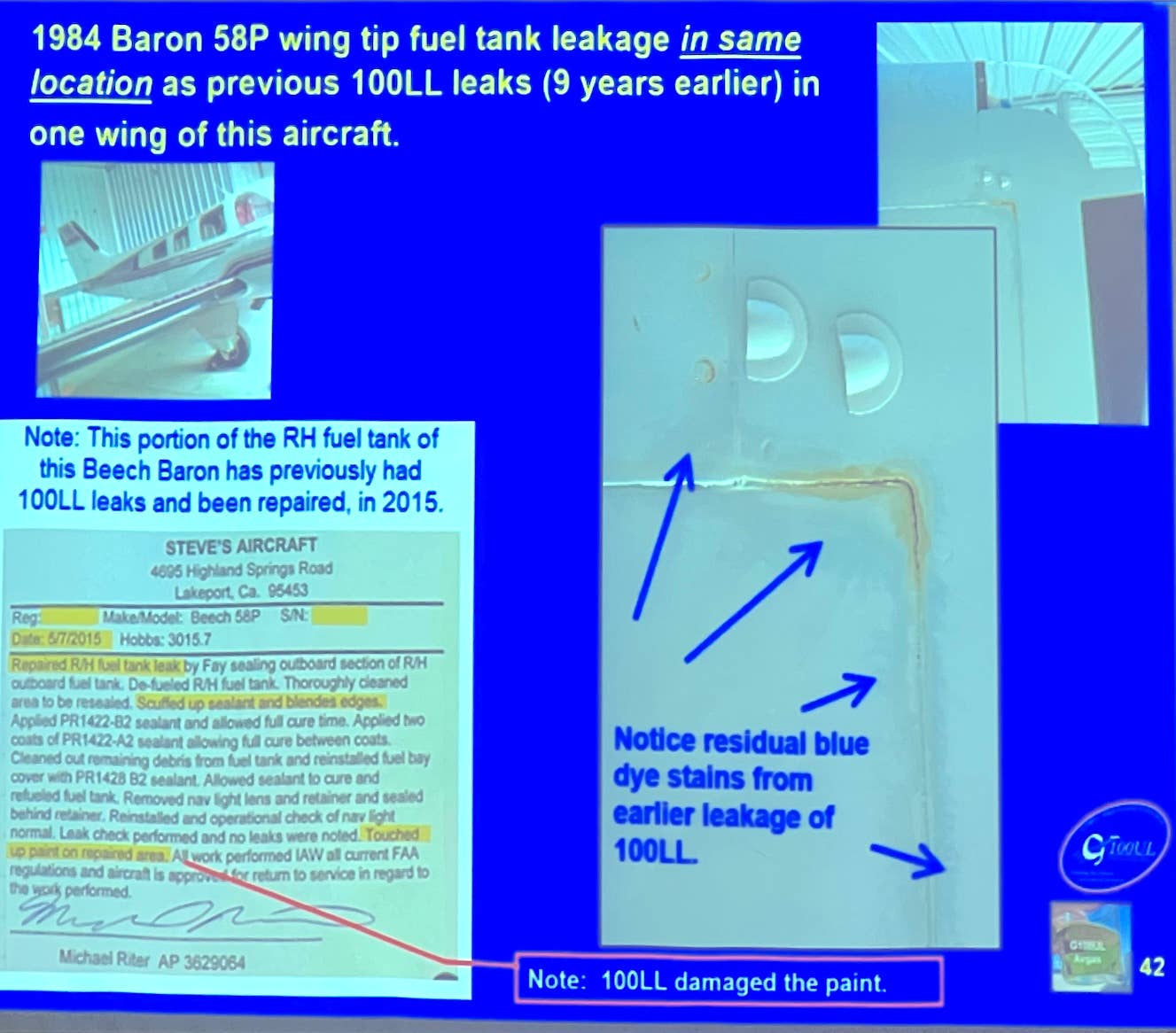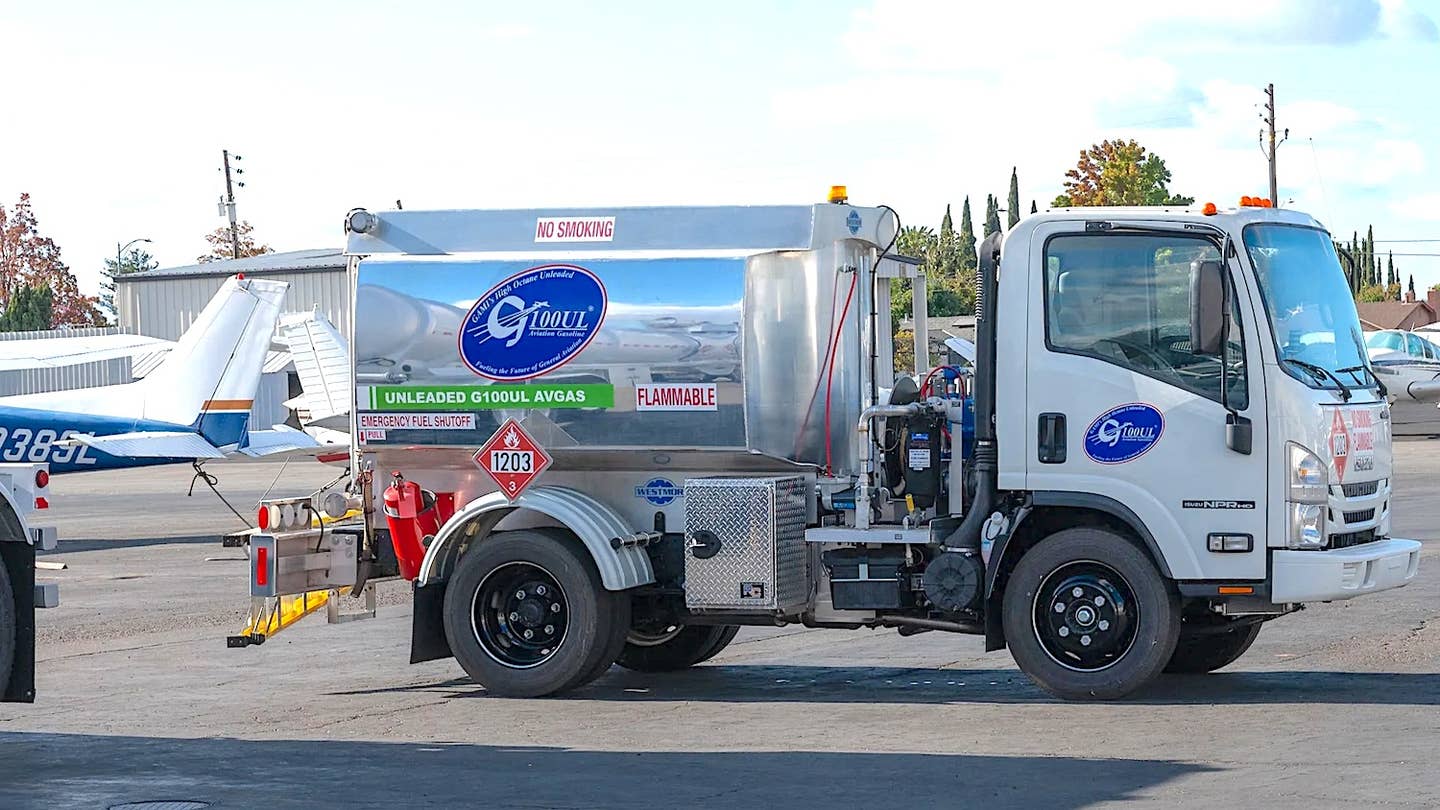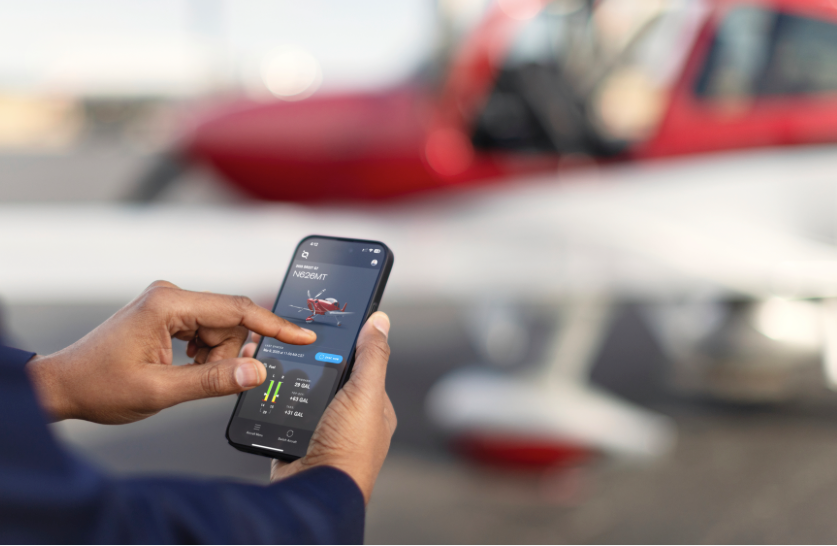Destination Direct Flight Planning Software
Planning a cross-country flight has been revolutionized by the PC and remarkable software packages from companies like Delta Technology, MentorPlus, and RMS. Here’s an in-depth look at PC flight planning package I’ve been using for the past couple of years – it’s called “Destination Direct” from Delta Technology. Includes moving map and logbook capabilities.
NOTE: This review was written in 1996, and while it may be helpful in planning your purchases, links to purchase or download the demo no longer work. We recommend visiting Destination Direct at their current home on the web, www.FlightPlan.com. - 5/24/2005 | ||
![]()
 Iremember my first major cross country flight as if it were yesterday. It was a trip frommy Philadelphia home base to Boca Raton, Florida, to visit my in-laws who had recentlymoved to the sunny south. The ink was still wet on my private pilot certificate, and thedistance involved was a bit over 900 nautical miles. This was serious business.
Iremember my first major cross country flight as if it were yesterday. It was a trip frommy Philadelphia home base to Boca Raton, Florida, to visit my in-laws who had recentlymoved to the sunny south. The ink was still wet on my private pilot certificate, and thedistance involved was a bit over 900 nautical miles. This was serious business.
I recall spending weeks with charts spread out on the floor, struggling with the factthat charts printed on both sides can't be laid out to see the whole trip at once. I usedup a small ball of string plotting straight line courses, squinted at a protractor todetermine headings, and drew ragged lines on the charts themselves so I would rememberwhere I left off when I started the process again the next day.
When departure day arrived at last, I visited the Philadelphia FSS in person for acomplete weather briefing. I scribbled down columns of winds aloft figures, used my trustyE6B to laboriously work out all the leg ETEs, and took off as fully prepared as I couldbe.
That was many years and many thousands of gallons of avgas ago. Today, having now madethat very same Philly-to-Boca trip more than 50 times, I scarcely need to do any flightplanning or even open a chart enroute. I pretty much just check the weather, file, and go.When I level off at cruising altitude, black boxes on the panel tell me how I'm doing andwhen I'll arrive, assuring my passengers that I must know what I am doing.
But when I travel to a less-familiar destination, flight planning is a necessity. Thedifference is that with today's computerized flight planning and on-line weather access,the process takes me minutes instead of the hours or days that it used to take. And myflight planning is a lot more complete than it used to be, too.
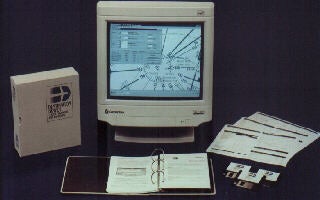 A couple ofyears ago when I was at Oshkosh, I purchased a copy of Delta Technology's"Destination Direct" PC software package, and have been using successiveversions of that software ever since. I can't imagine ever going back to the old way.
A couple ofyears ago when I was at Oshkosh, I purchased a copy of Delta Technology's"Destination Direct" PC software package, and have been using successiveversions of that software ever since. I can't imagine ever going back to the old way.
Destination Direct combines computerized flight planning, automated on-line weatherbriefing, and a massive database of airport and FBO information to provide a comprehensivetool for planning a cross-country flight. At installation, you customize the program withyour aircraft data, pilot data, and flight planning preferences.
The software then automates every phase of planning a flight: choosing a route;calculating leg distances, radials, times, and fuel burns; obtaining an on-line weatherbriefing from DUATS; calculating weight-and-balance; printing out a trip log and FAAflight plan form, and even providing airport data, runway diagrams, and FBO data at yourdestination. You can even ask the software to analyze the cost of making the trip (if youreally want to know). For commercial operators, it handles pilot scheduling...right downto telling him when to set his alarm so he'll get up in time to make the flight.
I find Destination Direct simple and intuitive to use. It has just about every flightplanning feature you could want (and then some), but you do not have to utilize all of itscapabilities each time you plan a trip. In fact I often use it to just get a quickpreliminary idea of routing and distance long before I get really serious about planning aflight. I have the software installed both on my home PC and on my notebook computer, so Ican use it even when I'm on the road.
Getting started
Installation is straightforward and very easy. The program requires Windows, and worksjust fine with Windows 95. It is distributed on about nine diskettes, and includes acomplete Jeppesen database of navaids, airports, FBOs, and other airport facilities suchas hotels and car rental agencies. Delta offers updates to the database either on aregular subscription basis or whenever you decide you need one. The updates also come onmultiple diskettes, although I wouldn't be surprised if a CDROM option becomes availablesoon.
Delta Technology recommends a 486DX or higher with at least 8 megabytes of RAM, Windows3.1, Windows 95 or Windows NT 4, plus a mouse, modem, and graphics-capable printer.Minimum installation of the IFR version requires 14 megabytes of hard disk space, and fullinstallation of all bells and whistles will take up to 33 megabytes of hard disk.
Customizing the the program properly takes some time and effort. You'll need to look upand enter a sizeable amount of aircraft performance data (airspeeds and fuel burns atvarious altitudes and power settings) plus weight-and-balance data (fuel tank capacities,passenger seat locations, and so forth) for every aircraft you fly regularly. Pre-storeddata is already there for 21 of the most popular GA airplanes, and you can fine-tune thesupplied data to your particular aircraft. But unfortunately I had to roll my own for theAerostar 601P that I fly.
Just to give you an idea, here's an outline of the data items you need to enter tocustomize the software:
Aircraft data
Fuel quantity, tankage, and type (avgas, mogas, or jet fuel)
Performance
Weight-and-balance
Center-of-gravity envelope
Costs
Compass deviation
Units of measure (metric/english, statute/nautical)
Preferences on how you fly the airplane (altitude, %power, etc.)
Pilot data
Name
Address
Qualifications (medical class and date)
Weight
Manifest (passengers/freight)
Costs (Biennial, training)
Personal schedule (how much time you need to get ready)
Communication (DUAT access)
Navigation default preferences
Type of flying (IFR, VFR)
Method of navigation (Airway, Direct VOR, RNAV)
Limits (how far off great-circle routing for airway)
Overwater and restricted area limits
User defined airports (I added some Bahamian ones)
User defined waypoints
Other preferences
Standard winds aloft (for preliminary flight planning w/o DUATS)
Display formats (Lat/Lon, etc.)
Modem setup
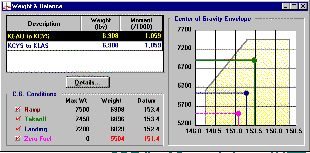 The good news is that you only need to enter all this stuff once, andit's simply a matter of filling in a series of Windows-type forms that are pretty muchself-explanatory. From then on, flight planning becomes a breeze.
The good news is that you only need to enter all this stuff once, andit's simply a matter of filling in a series of Windows-type forms that are pretty muchself-explanatory. From then on, flight planning becomes a breeze.
Keep in mind that the program will only be as accurate as the data you enter, so besure to use the most accurate real-world numbers on performance and fuel burn that youcan. Given good performance numbers and the winds aloft information obtained from DUAT, Ihave found that the flight time estimates produced by Destination Direct are usuallyastonishingly accurate. It's not unusual to complete a long cross-country within a minuteor two of ETA. This can be very reassuring on a fuel-critical mission.
Setting up annual and hourly costs will allow the program to compute an true hourlycost based on the number of hours per year you plan to fly. I entered my average annualinspection costs, 50-hour oil change costs, insurance, hangar, estimated maintenance andreserves for propellers and engines. In the pilot section I entered the cost of recurrentflight training, medical exam and charts. After you tell Destination Direct how many tripsand how many total hours you fly per year, it will report the cost for any trip planned.This is one feature I'm not sure I want to use, particularly if my wife is around. But itcertainly would be useful for charter or commercial operators.
Planning a flight
(NOTE: You can click on any of the miniature screen images in this article to seean actual-size version of the screen.)
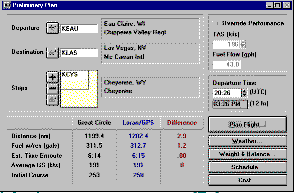 Destination Direct always starts with a "preliminary plan"page that allows you to control the program.
Destination Direct always starts with a "preliminary plan"page that allows you to control the program.
You enter your departure and destination points, and the program immediately gives youthe great-circle route numbers for a direct flight. If the flight is too long to makenon-stop with comfortable reserves, the software will suggest one or more intermediatestops at this point. It's really rather clever about picking such stops, and takes intoaccount your range, minimum runway length requirement, and fuel preference (av/mo/jet)that you specified for the aircraft during setup.
If you need help picking a destination airport, can't recall an airport identifier, orwant to evalute a different fuel stop than what the software came up with, you just clickon the "spectacles" icon. The program then lets you search its database to findinformation on airports and FBOs, determine which airports are close to a particular city,or even to add a user-defined airport not in the current database. Slick!
Once the departure, destination, and intermediate stopping points points are chosen,Destination Direct will come up with an automatic route for your flight based on flightrules you select (IFR or VFR) and altitude you wish to fly. I find it quite fascinating towatch the progress of the program as it searches for airways, avoids special-use airspace,routes you around bodies of water (if you so specified), and searches for applicable SIDSand STARS (it asks you which you plan to use. When this process is finished, the programreturns you to the preliminary plan page, but new numbers have been added to the originalestimates based on the automatically-selected routing. Now the direct great-circle routeis compared with the route actually planned, and you see how much of a penalty there isfor flying on the airways. (It's usually less than you might suppose, though not always.)
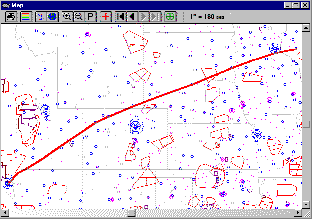 The menu bar at the top of the screen contains the "View"button which will allow several different ways to examine the flight planned. Perhaps themost useful of these is the "Map" option, which displays a detailed full-colormap of your flight with bold line depicting your route. The software lets you"de-clutter" the map by checking or un-checking what features you want to havedisplayed: navaids, intersections, airports, special-use airspace, state boundaries, andso forth.
The menu bar at the top of the screen contains the "View"button which will allow several different ways to examine the flight planned. Perhaps themost useful of these is the "Map" option, which displays a detailed full-colormap of your flight with bold line depicting your route. The software lets you"de-clutter" the map by checking or un-checking what features you want to havedisplayed: navaids, intersections, airports, special-use airspace, state boundaries, andso forth.
The route line on the map can be "rubber banded" - moved around with themouse - by positioning the cursor on the route line, holding down the left mouse button,and "dragging" the line to another location. If the location is a navaid, fix,or airport, that location will be automatically added to the flight plan. Waypoints can bedeleted from the route simply by clicking the right mouse button on that point.
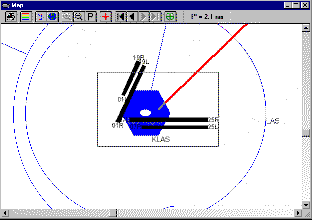 All route revisions you make in this fashion are immediately reflectedin the map, the navigation log, and the flight plan-all of which are available from the"View" menu. The entire process of route selection and modification is veryintuitive, interactive, and rather enjoyable.
All route revisions you make in this fashion are immediately reflectedin the map, the navigation log, and the flight plan-all of which are available from the"View" menu. The entire process of route selection and modification is veryintuitive, interactive, and rather enjoyable.
Back on the preliminary plan page, you can now click on various buttons to check theweather, calculate your weight-and-balance, see the costs for the trip (ugh!), or show theschedule for the pilot including his wake-up call time. Of these options, checking weatheris the most frequently used.
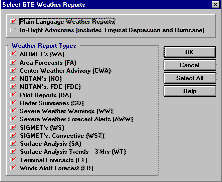 Destination Direct will automatically call the DUATS provider of yourchoice and download all pertinent weather information for your trip. A screen allows youto customize exactly what data you'd like to see and what you'd rather omit. You canselect plain-language reports if you like. Weather information is downloaded from DUATS atspeeds much faster than you can possibly read, but fortunately the program saves all thisinformation on disk so you can examine it off-line at your leisure. With a few mouseclicks, the forecast winds aloft can be extracted and the flight plan automaticallyrecomputed to take them into account. When you're satisfied with the flight plan, you canask Destination Direct to dial-up DUATS again to file your FAA flight plan electronically.
Destination Direct will automatically call the DUATS provider of yourchoice and download all pertinent weather information for your trip. A screen allows youto customize exactly what data you'd like to see and what you'd rather omit. You canselect plain-language reports if you like. Weather information is downloaded from DUATS atspeeds much faster than you can possibly read, but fortunately the program saves all thisinformation on disk so you can examine it off-line at your leisure. With a few mouseclicks, the forecast winds aloft can be extracted and the flight plan automaticallyrecomputed to take them into account. When you're satisfied with the flight plan, you canask Destination Direct to dial-up DUATS again to file your FAA flight plan electronically.
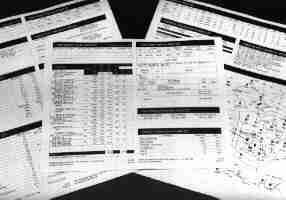 The last step in the process is usually to print out the hardcopyreports that you'll want to take along in the cockpit. Reports produced by DestinationDirect include the navigation log (in your choice of clipboard or kneeboard size), routemap, FAA flight plan, weather briefing, airport diagrams, and airport information(frequencies, FBOs, hotels, car rentals, and so forth). If your PC has a laser or ink-jetprinter, the printouts come out particularly nice-looking and easy-to-read.
The last step in the process is usually to print out the hardcopyreports that you'll want to take along in the cockpit. Reports produced by DestinationDirect include the navigation log (in your choice of clipboard or kneeboard size), routemap, FAA flight plan, weather briefing, airport diagrams, and airport information(frequencies, FBOs, hotels, car rentals, and so forth). If your PC has a laser or ink-jetprinter, the printouts come out particularly nice-looking and easy-to-read.
New Moving Map Module
Delta Technology's latest offering is a version of Destination Direct with anintegrated moving map capability. For pilots who carry a color notebook computer when theytravel and have an on-board GPS, Destination Direct can now offer both pre-flight planningand and in-flight situational awareness in a single integrated software package.
The DD moving map software offers three map display modes: north-up, course-up, and aunique third mode called "Intellicourse" in which the software automaticallydecides whether to display north-up or course-up and what map range to use, depending onyour current phase of flight.
The moving map software displays your actual ground track and saves a log to disk forreplay and review at a later time. This can be handy for training, for search-and-rescueor survey flights, or in the event of an FAA action. Some other handy moving map featuresinclude one-step present-position-direct route amendments and emergency airport search.
New Logbook Module
Delta Tech has also added an optional "PilotLogbook" module to DD. While notas fancy as specialized logbook programs like FlightLevelLogBook PLUS, it's more than adequate for most pilots and aircraft owners, and nicelyintegrated into the flight planning software. And because it's simple, its a lot quickerto learn.
The DD Pilot Logbook allows you to log your flying hours almost any way you want.There's a total of 40 columns in the logbook, with 35 of them customizable to your needs.Because the log is integrated with the flight planning system, you can pull informationfrom the Flight Plan for any logbook field. 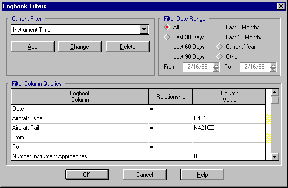 So you can enter your planned flight in thelogbook with just a click of the button. Then, after the flight, you can go back andadjust the entry for real time and conditions. Or print out the last logbook page, andfill it out by hand as you go, then enter the information into the computer later.Whatever works for you.
So you can enter your planned flight in thelogbook with just a click of the button. Then, after the flight, you can go back andadjust the entry for real time and conditions. Or print out the last logbook page, andfill it out by hand as you go, then enter the information into the computer later.Whatever works for you.
The modules lets you set up filters totrack your currency requirements. You can ask the program to look for field entries withina specific time and warn you when time is running short on fullfilling those requirements.A message will display when you start the program. Or, while in the currency area, justhightlight the item you wish to check on, then click the Check button. You can establishfilters for the on-screen display and hardcopy printouts as well. For instance, if youonly want to see your entries for flights taken in a Cessna 182 within the last six monts,just set up the filter and it's done.
Keeping the logbook software simple and tothe point was Delta Tech's goal. This is not an "all things to all pilots"logbook program. On the other hand, it is flexible enough to handle most requirements andis very easy to learn. 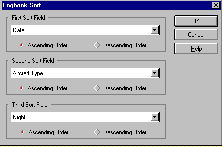 There's also an import feature that allows you to importinformation from other popular logbook programs...so the switch to DD pilot logbook shouldbe relatively painless!
There's also an import feature that allows you to importinformation from other popular logbook programs...so the switch to DD pilot logbook shouldbe relatively painless!
Dollars and Cents
Delta Technology offers four versions of Destination Direct, plus several optionaladd-ons:
Destination Direct Pro (IFR) costs $295.00 and comes with a Jeppesen database that covers all of North and Central America (including Canada, U.S., Mexico, Central America, and the Caribbean) including extended services (FBOs, Hotels and Car Rental). It also includes multiple pilot capabilities, a scheduling function, and on-line interfaces for AccuWeather and Fillup Flyer Fuel Finder (paid services).
Destination Direct Pro (VFR) costs $199.00 and has the same geographic coverage and features, but omits airways and other IFR-specific data. (You can upgrade to the IFR version at any time by paying the $80.00 difference.)
Destination Direct Personal (IFR) costs $229.00 and differs from the Pro version in that it supports only a single pilot, excludes the scheduling feature and AccuWeather and Fillup Flyer Fuel Finder interfaces, and has a database limited to the lower-48 states. The extended services database (FBOs, Hotels and Car Rental) is a $59 extra-cost option with this version.
Destination Direct Personal (VFR) costs $149 and has the same geographic coverage and features, but omits airways and other IFR-specific data. (You can upgrade to the IFR version at any time by paying the $50.00 difference.)
The Moving Map module may be added to any DD version for $120 additional.
The Personal Logbook module may be added to any DD version for $49 additional.
Current registered owners of the IFR or VFR versions of Destination Direct may addMoving Map capability for $120, and may add Personal Logbook capability for $49.
You can purchase a variety of database update subscriptions (Delta gets a newly-revisedJeppesen database every 28 days) or simply order updates whenever you think you need one.Here's the pricing on updates:
Personal VFR, single update...$65.00 + $5.00 S&H.
Personal VFR, three 112-day updates...$125.00+ $9.00 S&H.
Pro VFR, single update...$75.00 + $5.00 S&H.
Pro VFR, three 112-day updates...$135.00+ $9.00 S&H.
Personal IFR, single update...$85.00 + $5.00 S&H.
Personal IFR, three 112-day updates...$150.00+ $9.00 S&H.
Personal IFR, six 56-day updates...$225.00+ $18.00 S&H.
Pro IFR, single update...$99.00 + $5.00 S&H.
Pro IFR, three 112-day updates...$165.00+ $9.00 S&H.
Pro IFR, six 56-day updates...$270.00+ $18.00 S&H.
Pro IFR, thirteen 28-day updates...$585.00+ $39.00 S&H.
One or two updates a year is plenty for folks who fly mostly VFR. (That's how often ourWACs and sectionals are updated.) IFR pilots should consider a 112-day updatesubscription. (That's about how often IFR enroute charts are revised.) A commercialoperator who flies IFR every day might conceivably justify the 56-day update subscription,but I frankly can't imagine anyone needing a 28-day subscription...even Jepp's own IFRenroute charts aren't updated that often.
The update prices reflect the fact that Jeppesen is very proud of its NavData, butare actually remarkably low when you consider the cost a single NavData updatefor a Garmin GPSMAP-195 handheld: $130.00. What's more, every Destination Direct updatecomes with the latest revision of the software at no additional cost, so it's easy to keepyour software current.
Destination Direct vs. FliteStar
Destination Direct's primary competition is FliteStar from MentorPlus (recentlyacquired by Jeppesen), a package that is heavily advertised and better known. FliteStarcosts about the same as DD, and its capabilities are very similar to those of DestinationDirect. FliteStar is available in both Windows and Macintosh versions (DD is strictlyWindows-only).
However, FliteStar appears to fall short of Destination Direct in a couple of areasthat I consider important. The FliteStar database lacks data on FBOs, hotels, car rentals,etc., unless you spring for the optional AOPA Aviation USA option for an extra $79.95 peryear. In addition, FliteStar doesn't do automatic routing around special-use airspace,overwater areas, or high terrain the way Destination Direct does.
There are two other low-end competitors: FlightSoft from RMS and The Aviator'sUtilities (TAU) from Excel. Both are cheaper than either FliteStar or Destination Direct,and both are much less capable programs. For aviators who want to experiment with PC-basedflight planning on a tight budget, TAU is now bargain-priced at $99.00 with (non-Jeppesen)database updates at $45.00. But it's a DOS-based (non-Windows) program and has the fewestfeatures and the most primitive map display of any of the packages mentioned.
After looking at all of them, my opinion is that Destination Direct is the best of thebunch, with a few more features and a bit less expensive than FliteStar, and lightyearsahead of the others. Unless you use a Macintosh, in which case FliteStar is pretty muchthe only game in town.
Final Impressions
 I find thatDestination Direct does a first-rate job of planning my cross-country flights, IFR or VFR.It selects a route, displays it graphically and allows me to revise it, obtains a weatherbriefing, and prints out a nice trip log. It takes forecast winds aloft into account andcalculates all the necessary information I need (and more) before I pull the chocks, startthe engines, and launch. You have a right to expect all these things from a flightplanning package that costs a couple of hundred bucks, and Destination Direct does themwell.
I find thatDestination Direct does a first-rate job of planning my cross-country flights, IFR or VFR.It selects a route, displays it graphically and allows me to revise it, obtains a weatherbriefing, and prints out a nice trip log. It takes forecast winds aloft into account andcalculates all the necessary information I need (and more) before I pull the chocks, startthe engines, and launch. You have a right to expect all these things from a flightplanning package that costs a couple of hundred bucks, and Destination Direct does themwell.
If I had to criticize any aspect of the program, it would be the automatic routingfunction. Sometimes it seems to me that the automatic routing processing takes a longertime than it should. The folks at Delta tell me that this is because the software doesthree-dimensional analysis of the route to make sure it provides adequate terrainclearance and conforms to your other constraints such as avoiding overwater legs. All thiscleverness is apparently pretty processor-intensive. Maybe Santa will bring me a PentiumPro 200 this Christmas!
And sometimes, the automatically-selected route isn't exactly what I had in mind.Occasionally, it has me flying past my destination to the next VOR and then doubling backto get to the airport, probably because of some weird STAR or somesuch. No automaticrouting algorithm is perfect, and sometimes I'll have to manually "tweak" theroute to get what I really want. The "rubber band" feature is invaluable here,and makes it easy to fine-tune the route.
If you fly the same route often, you can save your "tweaked" route on diskfor next time. Then any time you want to fly that route in the future, simply retrieve it,and have Destination Direct call DUATS to get your briefing and file your flight plan.
I love the FBO and airport database, and find it both very complete and very useful.You can find a hotel or a restaurant at your destination or other airport using the"look up" functions strategically placed throughout Destination Direct. With alittle more refinement, I'd probably be willing to throw out my printed airportdirectories altogether.
Storing the weather briefing on disk allows you to go back and look up a terminalforecast you didn't pay much attention to until the enroute weather turned sour, or theheadwinds turned out to be worse than expected. Having all the weather at your fingertipsfor the entire flight is a valuable feature. I often carry my Toshiba laptop on-board so Ican double-check such details enroute. I only wish its screen was easier to read in thebright cockpit environment. Of course, you can print out the weather briefing and carry itin hardcopy if you prefer.
As I mentioned at the outset, I started using Destination Direct about two years ago,first using a Beta version I bought at Oshkosh, so I have watched the program evolve fromits somewhat uncertain beginnings to the mature and refined program that it is today. Ialways look at first-time Oshkosh vendors and wonder if they will be back next year. Deltahas proven itself to have staying power.
![]() Located in Eau Claire, Wisconsin,Delta Technology has been around for 13 years, close to an eternity in the softwarebusiness. During the time I've owned Destination Direct, I've experienced good support, asuccession of software improvements, and readily available Jeppesen NavData databaseupdates.
Located in Eau Claire, Wisconsin,Delta Technology has been around for 13 years, close to an eternity in the softwarebusiness. During the time I've owned Destination Direct, I've experienced good support, asuccession of software improvements, and readily available Jeppesen NavData databaseupdates.
Like many software firms, Delta Technology is net-savvy: you can ask questions or obtain support via e-mail.Your e-notes will usually be answered by Delta's technical support manager Gary Hawkins,who I've found to be extremely helpful and responsive. If you'd rather talk than type, youcan call Delta toll-free at 1-800-515-6900.
Delta promises even more features and a continued upgrading of the Destination Directproduct. Personally, I'd vote for a CD-ROM version of the program that contained even moreFBO and airport data.
While writing this, I just happened to look out the window and wondered: "How longwould it take for Helen and me to fly to New Orleans for the weekend?" It's nice toknow that the answer is just a few mouse clicks away.
| Delta Technology debuts "Destination Direct BASIC" priced at just $79 Delta Technology has now introduced a new low-end version - Destination Direct BASIC - designed specifically for the new or recreational pilot. BASIC is great for the weekend renter-pilot, or the VFR pilot who seldom travels more that 200-300 miles from home. Delta kept the price of BASIC down - way down - by saying goodbye to expensive Jeppesen NavData and taking out features that a VFR pilot just doesn't need. DD BASIC is limited to VFR single-pilot use, and includes FAA navigation data for the lower 48 states. Like other DD versions, BASIC calculates W&B, performs automatic routing, interfaces with DUATS to get weather and file flight plans, prints out complete reports to take along on the flight, and is Y2K-compliant. But its best feature is its low introductory price of $79, with low-cost data updates that cost just $35 each or $65 for three updates per year. What features do you lose with DD BASIC that are included with higher-priced versions? Here's what you don't get:
If you can live without these features, Destination Direct BASIC may be just the ticket, and its low price is irresistable. You can now order it online. |
NOTE: This review was written in 1996, and while it may be helpful in planning your purchases, links to purchase or download the demo no longer work. We recommend visiting Destination Direct at their current home on the web, www.FlightPlan.com. - 5/24/2005 | ||
 Downloada free demo version!
Downloada free demo version!
You can download a free demo version of "DestinationDirect" and take it for a test-drive. See for yourself how the software looks andworks. The download is 2.7 megabytes and should take about 30 minutes at 14.4Kb/s or about15 minutes at 28.8Kb/s.
 Order"Destination Direct" On-Line!
Order"Destination Direct" On-Line!
You can purchase Destination Direct on-line right here, andhelp support continued free access to AVweb and AVflash in the process. Ifyou're thinking about buying a PC flight planning package, we'd sure be grateful for yourpatronage!


